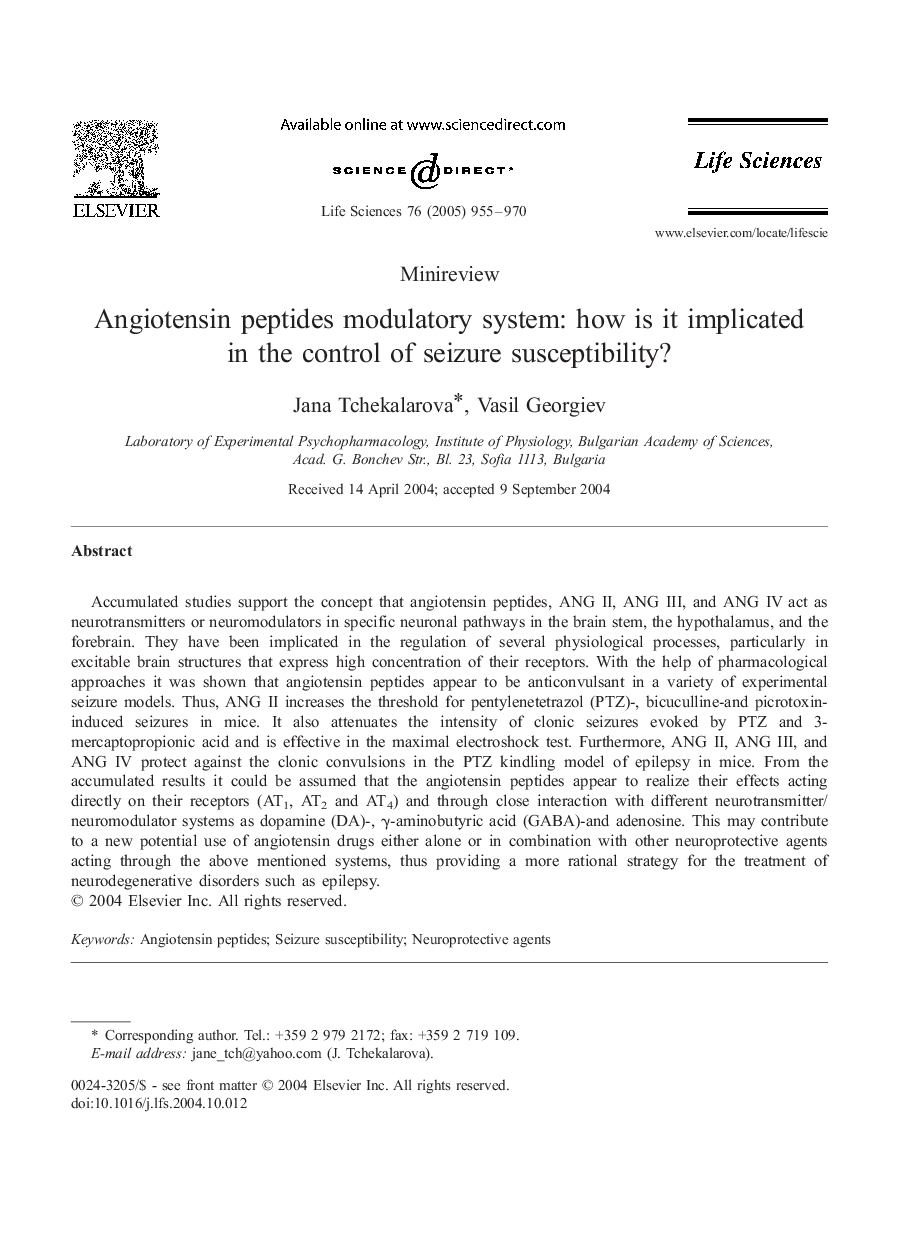| Article ID | Journal | Published Year | Pages | File Type |
|---|---|---|---|---|
| 9012981 | Life Sciences | 2005 | 16 Pages |
Abstract
Accumulated studies support the concept that angiotensin peptides, ANG II, ANG III, and ANG IV act as neurotransmitters or neuromodulators in specific neuronal pathways in the brain stem, the hypothalamus, and the forebrain. They have been implicated in the regulation of several physiological processes, particularly in excitable brain structures that express high concentration of their receptors. With the help of pharmacological approaches it was shown that angiotensin peptides appear to be anticonvulsant in a variety of experimental seizure models. Thus, ANG II increases the threshold for pentylenetetrazol (PTZ)-, bicuculline-and picrotoxin-induced seizures in mice. It also attenuates the intensity of clonic seizures evoked by PTZ and 3-mercaptopropionic acid and is effective in the maximal electroshock test. Furthermore, ANG II, ANG III, and ANG IV protect against the clonic convulsions in the PTZ kindling model of epilepsy in mice. From the accumulated results it could be assumed that the angiotensin peptides appear to realize their effects acting directly on their receptors (AT1, AT2 and AT4) and through close interaction with different neurotransmitter/neuromodulator systems as dopamine (DA)-, γ-aminobutyric acid (GABA)-and adenosine. This may contribute to a new potential use of angiotensin drugs either alone or in combination with other neuroprotective agents acting through the above mentioned systems, thus providing a more rational strategy for the treatment of neurodegenerative disorders such as epilepsy.
Related Topics
Health Sciences
Medicine and Dentistry
Cardiology and Cardiovascular Medicine
Authors
Jana Tchekalarova, Vasil Georgiev,
